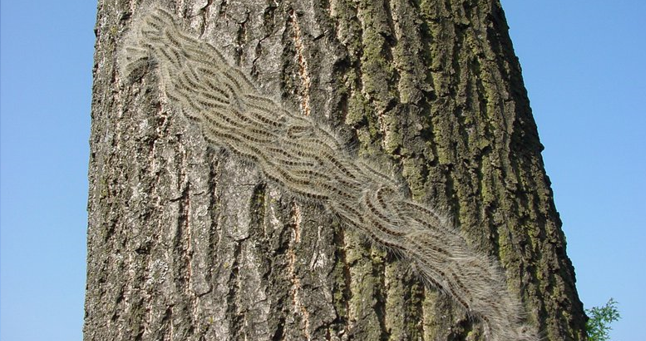
Picture: Henry Kuppen
Oak processionary moth (OPM) caterpillars feed on the leaves of oak trees and can pose a risk to tree health when they reach high numbers. OPM also presents a risk to human and animal health due to the irritating hairs found on the caterpillars. The risks associated with OPM need to be managed. Risk management can take many forms, but the main focus is to minimise the negative impacts of the pest, and to prevent or slow the rate of spread into unaffected areas.
The OPM resource hub contains resources for owners and managers of oak trees which are or could be affected by OPM. These resources are designed to support owners and managers to understand and evaluate the risks associated with OPM and take the appropriate risk management actions. These resources are constantly under review and additional resources may be developed in response to particular needs, so it is worth re-visiting these pages to catch up on any recent developments. Please use this link to join the OPM mailing list and receive regular updates.
For further information on how to identify OPM, species commonly confused with OPM, and advice on the associated health risks, please visit: https://www.gov.uk/guidance/managing-oak-processionary-moth-in-england.
If you suspect you have found an OPM nest or caterpillars please report it to us immediately via TreeAlert.
We also accept reports via email at opm@forestrycommission.gov.uk, though TreeAlerts are preferred.
If you do choose to report sightings by email, please include in your correspondence to us:
A template management plan and detailed guidance for managing OPM risks on sites with public access.
A toolkit to support Local Authorities to develop plans and take action in response to OPM.
An interactive map showing lepidopteran biodiversity in OPM affected areas to guide risk management decisions.
An interactive map showing the locations of recent confirmed reports of OPM and the national management zones.
Information about different OPM management options.
Information about OPM communications and events.